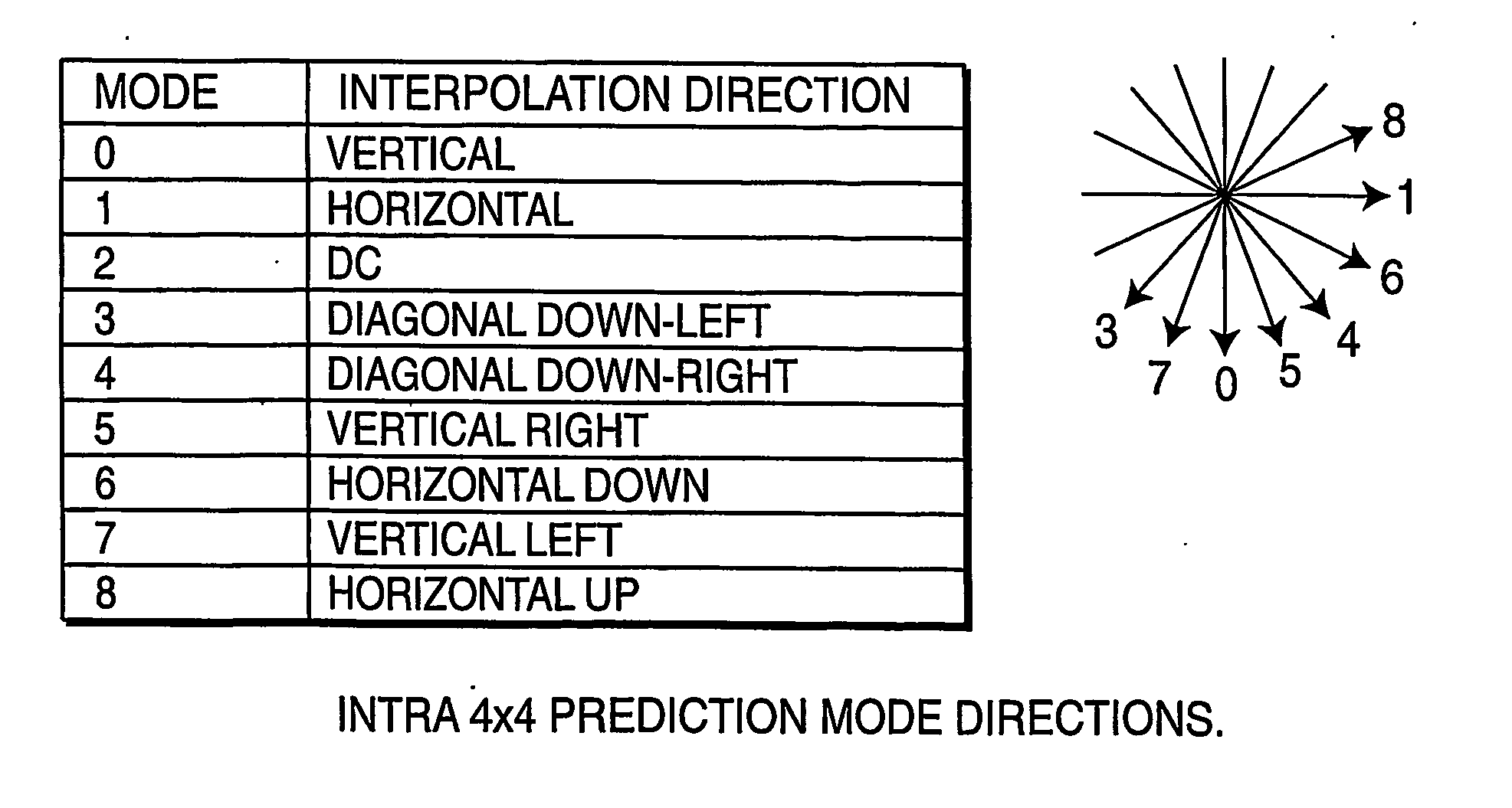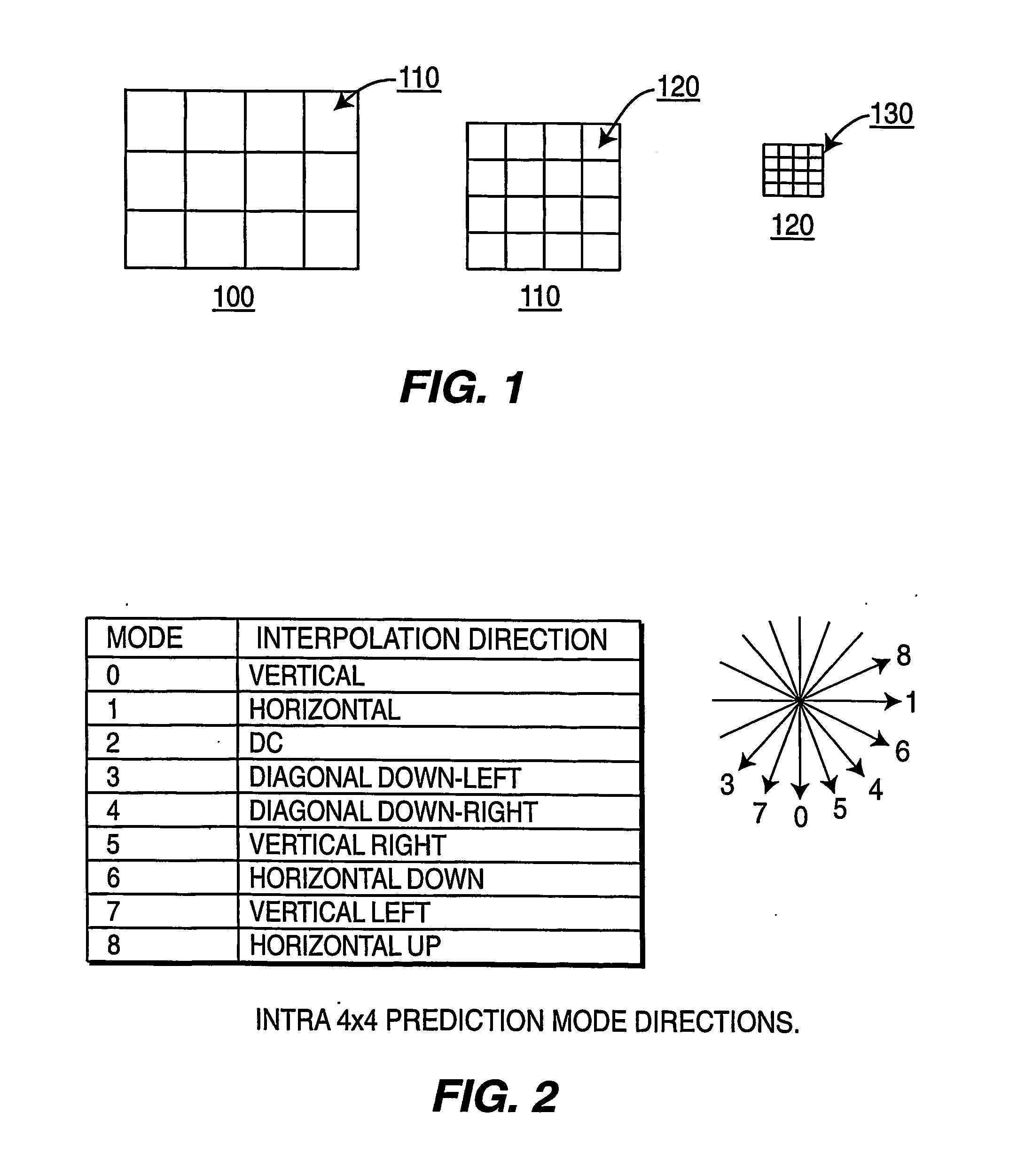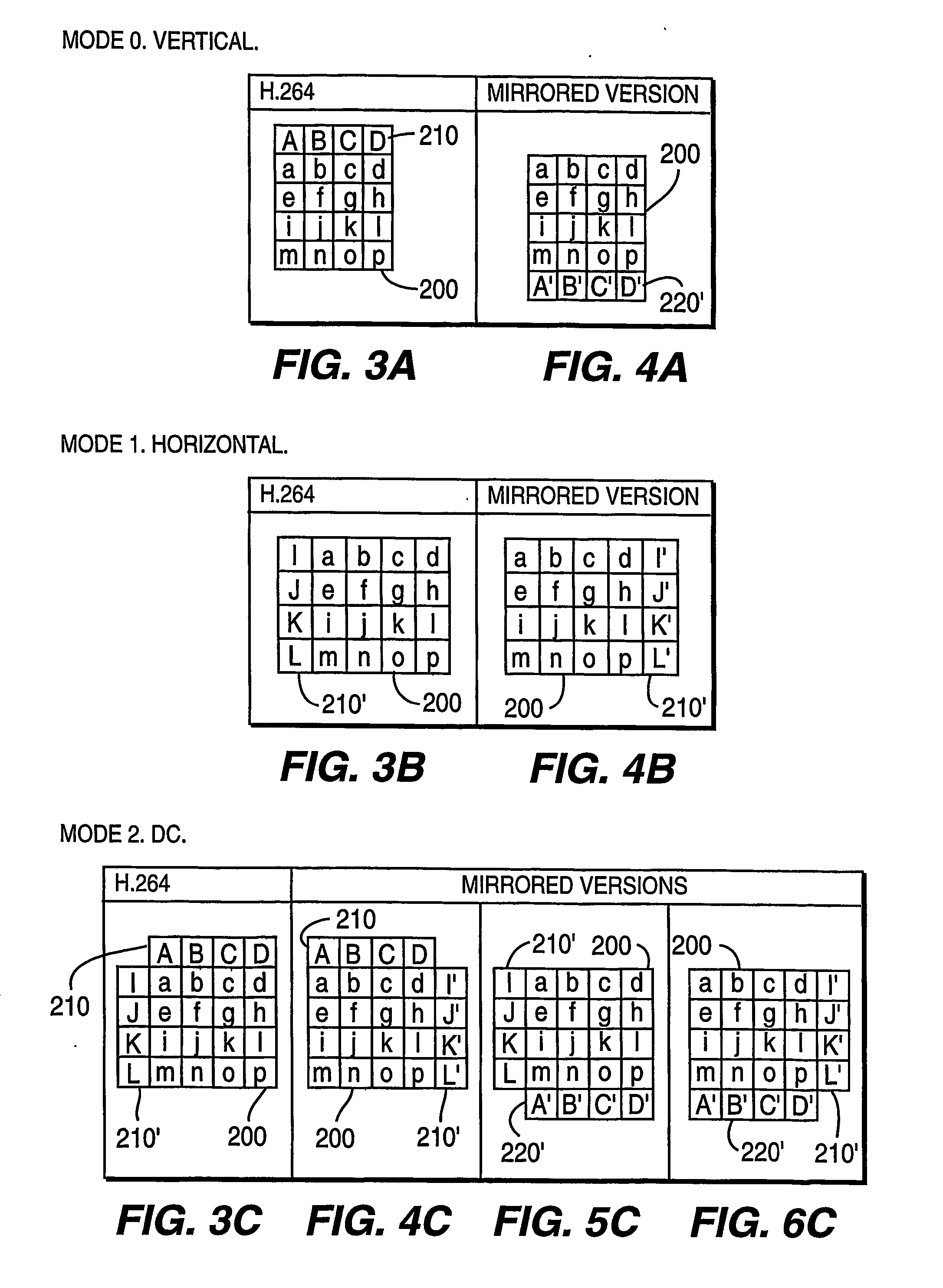Defining interpolation filters for error concealment in a coded image
a technology of error concealment and interpolation filter, which is applied in the direction of color television with bandwidth reduction, signal generator with optical-mechanical scanning, and signal system with bandwidth reduction. it can solve the problems of spatial concealment techniques that rely on temporal error concealment techniques, coded video streams incur data loss or corruption, and spatial concealment techniques achieve lower performan
- Summary
- Abstract
- Description
- Claims
- Application Information
AI Technical Summary
Problems solved by technology
Method used
Image
Examples
Embodiment Construction
[0013] Block-based video compression techniques, such as embodied in the proposed ISO / ITU H.264 coding technique, operate by dividing a picture into slices, each slice comprising a set of macroblocks or macroblock pairs, with each macroblock coded in accordance with the coding technique. A macroblocks typically comprises a squared region of 16×16 pixels. For coding purposes, macroblocks can be further partitioned into sub-macroblocks not necessarily squared. Each sub-macroblock can have a different coding mode when the macroblock is encoded. For ease of discussion, a block will be referred to as a sub-macroblock of 4×4 pixels. FIG. 1 depicts the partitioning of a coded picture 100 into macroblocks 110, with each macroblock 110 partitioned into blocks 120, and each block partitioned into pixels 130. Note that the number of macroblocks within a picture varies depending on the size of the picture, while the number of blocks within a macroblock remains constant.
[0014] To reduce the cos...
PUM
 Login to View More
Login to View More Abstract
Description
Claims
Application Information
 Login to View More
Login to View More - R&D
- Intellectual Property
- Life Sciences
- Materials
- Tech Scout
- Unparalleled Data Quality
- Higher Quality Content
- 60% Fewer Hallucinations
Browse by: Latest US Patents, China's latest patents, Technical Efficacy Thesaurus, Application Domain, Technology Topic, Popular Technical Reports.
© 2025 PatSnap. All rights reserved.Legal|Privacy policy|Modern Slavery Act Transparency Statement|Sitemap|About US| Contact US: help@patsnap.com



